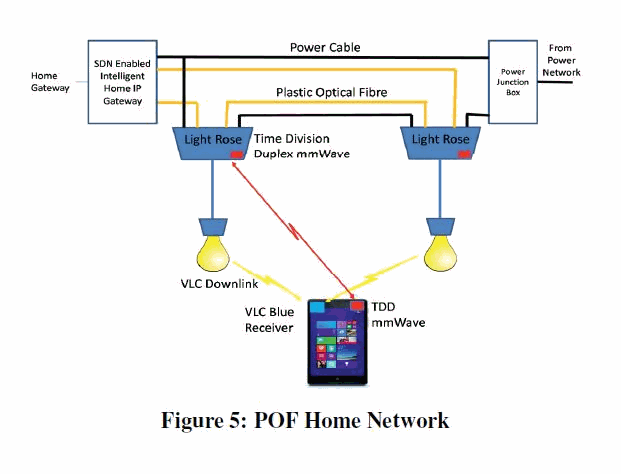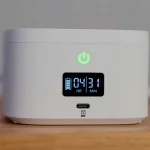London Scientists Prep 10Gbps Home Wireless Network Using Li-Fi and 5G
A team working out of Brunel University London has secured £720,000 of funding from Europe’s Horizon 2020 programme in order to help them develop a 10Gbps capable home wireless network using hybrid Li-Fi (Light Fidelity) and mmWave tech inside LED (Light-Emitting Diode) room lights.
The idea of a Visible Light Communication (VLC) network is nothing new and Li-Fi technologies have been in development for quite a few years, although commercial products are somewhat lacking. In simple terms, the LED lights flicker on and off thousands of times a second (i.e. too fast for your eyes to perceive) and by altering the length of the flickers you can introduce digital communications (like flashing a torch to send Morse code).
In theory you could embed this sort of technology in computer screens or desk lamps, although in practice it would work best if installed inside a LED light bulb on your ceiling because of the wider coverage. Likewise it would also be more energy efficient than a standard WiFi wireless network and significantly faster, albeit with a few caveats.
Advertisement
Electronics and software engineers at Brunel University London are just one of the teams working on Li-Fi solutions as part of a 3 year project. The goal is to create a 10Gbps (Gigabits per second) local wireless network in homes and buildings (offices etc.) with a delay of just 1ms (millisecond).

The new network would make use of both Li-Fi and 5G wireless technologies in the millimeter Wave (mmWave) frequency bands, although judging by the diagram above it’s probably not something that an ordinary home owner would want to install; unless you’re happy with running lots of optical fibre cable around your various light fittings. However it may have applications in other fields.
Professor John Cosmas said:
“It will allow surgeons to perform robotic surgery from a different hospital from where the patient is located.
In general, it will enable the Internet of Control — remote control of machines and robots through the Internet. So far, this has not been possible because of large and variable latencies — delays through the existing Internet.
People will no longer need to travel as much, and will work from home more effectively, thereby reducing the use of fossil fuels for transport.”
The current plan is to develop and install a “remote radio-light head 5G” demonstrator hybrid Li-Fi / mmWave network and advise on systems in a Paris Museum (Musée de la Carte à Jouer), as well as an unnamed Madrid underground station and a Chinese supermarket. The team suggests that it could also find its way into tube stations, airports, planes, trains, schools and hospitals.
Advertisement
However mass market adoption would probably be contingent upon the technology finding its way into lots of consumer products, which is unlikely to happen if they make it difficult to install. LiFi also suffers from a number of drawbacks, such as the fact that you’d have to buy lots of pricey new bulbs in order to cover your home (visible light cannot penetrate through walls or other solid objects and mmWave signals can suffer from a similar issue).
Oddly the team also states that Li-Fi “cuts harmful electromagnetic exposure because it only transmits 2-3m [metres],” which they say means there “will be much less electromagnetic radiation within buildings [and] this could reduce the ill effects on humans and potentially lower incidence of tumours and leukaemia.”
The above seems like an odd statement to make given the lack of hard scientific evidence to support harm from wireless networks in adults (unless you go around with one literally glued to your head all day.. for several years). Mind you, more research would always help.
Mark is a professional technology writer, IT consultant and computer engineer from Dorset (England), he also founded ISPreview in 1999 and enjoys analysing the latest telecoms and broadband developments. Find me on X (Twitter), Mastodon, Facebook, BlueSky, Threads.net and Linkedin.
« Virgin Media Agrees to Move Light Obstructing Barrhead Street Cabinet
















































Comments are closed